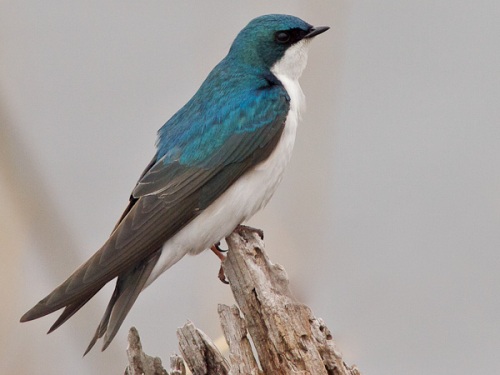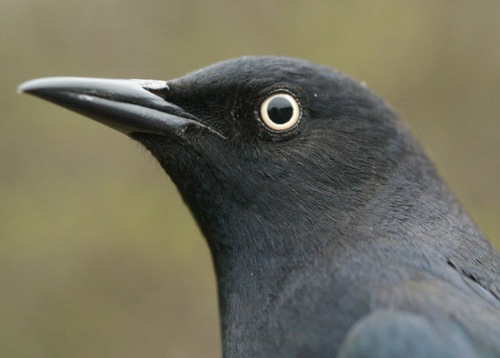|
|
THIS WEEK |
THIS SPRING |
2012 TOTAL |
SITE TOTAL |
# birds (and species) banded |
102 (19) |
102 (19) |
177 (23) |
35928 (108) |
# birds (and species) repeat |
24 (6) |
24 (6) |
38 (8) |
6451 (68) |
|
# birds (and species) return |
21 (6) |
21 (6) |
47 (8) |
1008 (38) |
|
# species observed |
64 |
74 |
79 |
205 |
|
# net hours |
346.0 |
346.0 |
409.8 |
59508.9 |
|
# birds banded / 100 net hours |
29.5 |
29.5 |
43.2 |
60.4 |
|
|
Note: table does not include nocturnal banding (owls) |
Banders-in-charge: Simon Duval, Gay Gruner
Assistants: Richard Beauchamp, Chris Cloutier, Yolande Cossette, David Davey, Jean Demers, Liette Fortier, Andray Gagné, Alison Hackney, Lisa Keelty, Louise LeBel, Barbara MacDuff, Francine Marcoux, Daniel Martin, Betsy McFarlane, Yves Paquette, Benoit Piquette, Rodger and Elise Titman, Monique Venne
Notes: We were excited this week to resume our banding program - but it was a surprise fly-by observation that was the undisputed highlight of the week. On April 20, Barbara MacDuff heard the distinct nasal call of a Fish Crow while on census, and Simon happened to be outside at the time and not only heard it too, but caught a glimpse of it flying past with some American Crows. It was seen briefly again just over half an hour later, again flying past; later in the morning it was seen a third time, feeding in the adjacent field with 50 American Crows, allowing the smaller size to be seen. At that location it repeated its nasal two-part call every few minutes; after a while the whole flock took off again, and the more rapid wingbeats of the Fish Crow were apparent in comparison to the American Crows. There was been an impressive influx of Fish Crows in southern Ontario over the past couple of months, but to our knowledge this is the first record for Quebec. We were unable to locate it again on subsequent days, but will definitely keep a close eye on the crows in case it returns - and encourage everyone else to look closely at crow flocks too!

One of the many local Tree Swallows.
(Photo by Simon Duval)
|
Aside from the Fish Crow, we observed 15 other species for the first time this year: Common Merganser, Double-crested Cormorant, Virginia Rail, Solitary Sandpiper, Greater Yellowlegs, Osprey, Northern Harrier, Bank Swallow, House Wren, Ruby-crowned Kinglet, Hermit Thrush, Palm Warbler, Vesper Sparrow, Savannah Sparrow, and Rusty Blackbird ... plus we had another 3 new birds for spring that we also recorded in the late part of winter (Killdeer, Great Black-backed Gull, Fox Sparrow). Naturally all 19 species we banded this week were new for the season, but 14 of them were also new for 2012: Tree Swallow, Brown Creeper, Ruby-crowned Kinglet, Golden-crowned Kinglet, American Robin, Hermit Thrush, Western Palm Warbler, Northern Cardinal, Swamp Sparrow, White-throated Sparrow, Fox Sparrow, Red-winged Blackbird, Rusty Blackbird, and Purple Finch (while Downy Woodpecker, Blue Jay, American Tree Sparrow, Song Sparrow, and American Goldfinch were the 5 already banded at least once between January and March). Both the number of birds and the number of returns this week were somewhat above average for the first week of spring, while the 74 species observed so far is a record high, perhaps related to the unusually early arrival of spring this year. Among the returns was a White-throated Sparrow we banded at MBO in September 2009.
This week’s
top 10 [last week's rank in brackets]
#
individuals banded |
mean # individuals observed daily |
1. Red-winged Blackbird (21) |
1. Canada Goose (158) [1] |
2. Ruby-crowned Kinglet (20) |
2. American Robin (57) [7] |
3. White-throated Sparrow (18) |
3. Red-winged Blackbird (55) [2] |
4. Song Sparrow (10) |
4. American Crow (34) [4] |
5. Swamp Sparrow (7) |
5. White-throated Sparrow (23) [-] |
6. American Goldfinch (5) |
6. Black-capped Chickadee (20) [8] |
7. American Robin (4) |
7. Wood Duck (14) [8] |
8. Purple Finch (3) |
8. Song Sparrow (14) [6] |
9. Hermit Thrush (2) |
9. Ring-billed Gull (13) [10] |
9. American Tree Sparrow (2) |
10. Mallard (12) [5] |
9. Fox Sparrow (2) |
10. Ruby-crowned Kinglet (12) [-] |
|
Red-winged Blackbird narrowly edged Ruby-crowned Kinglet for the most frequently banded species this week, not surprising since both have been dominant in the first week of previous years. White-throated Sparrow was close behind in third place, much more numerous than in any previous year at this time. As usual for the first week of spring banding, several other sparrows made the top ten. The biggest surprises this week were Purple Finch (last banded in spring in 2009), and Hermit Thrush (only a single one banded across all previous spring programs, in sharp contrast to 339 banded in fall).
After a surprisingly dominant showing last week, Cedar Waxwing dropped back out of the top ten this week; new to the list thanks to a typical mid-April influx were Ruby-crowned Kinglet and White-throated Sparrow. The other species on the list were the same as last week, but American Robin numbers increased dramatically, while Mallards tapered off somewhat. The Wood Ducks remain a daily fixture, much to everyone's delight.
|

Although very common in fall, Hermit Thrushes are rare at MBO in spring - this was one of two banded this week, and only our third overall in 8 years of spring research.
(Photo by Simon Duval)
|



